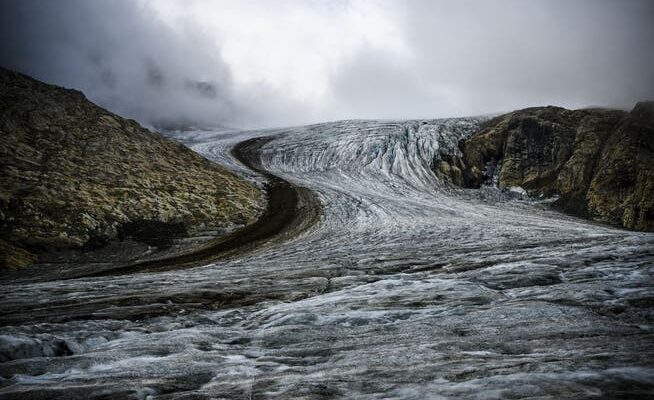A study shows that the ice tongues will shrink particularly sharply in western North America and Central Europe. In many places one should prepare for a changed water supply of the rivers.
The Gries Glacier in Valais is one of the fastest shrinking glaciers in Switzerland (photo from September 2, 2022).
Due to global warming, glaciers are shrinking not only in the Alps, but all over the world. Now there are new forecasts for the frozen streams that are more detailed than before.
By 2100, at least a quarter of the ice mass will have disappeared from glaciers – provided the temperature rises just 1.5 degrees Celsius above pre-industrial levels. With a warming of 4 degrees, 41 percent of the ice will be lost. This is the conclusion of an extensive study by scientists led by David Rounce from Carnegie Mellon University in Pittsburgh published in Science magazine to have.
Humanity is currently on track for 2.7 degrees of warming if national climate commitments are met. This would lead to the extensive disappearance of the glaciers in the middle latitudes, for example in Central Europe.
The results of the new study confirm earlier studies that were made with less measurement data and coarser calculation models. If you compare the results with the last overview study from 2020, however, the glacier retreat is somewhat larger: In a scenario with medium greenhouse gas emissions, the ice mass decreases by around 27 percent from 2015 to 2100 in the old study, in the new study the loss is around 31 percent.
Models take ice flow into account
According to co-author Matthias Huss from ETH Zurich, this time the researchers were able to use more accurate data and better calculation models. In the past, there were often only regional estimates of past ice loss – this is used to calibrate models. Information is now available for individual glaciers.
The thickness of the ice is also known more precisely today, says Huss. The models used now explicitly take into account the flow process of the glaciers. That wasn’t possible before.
The ETH researcher explains that the current study is very helpful in bringing the previous forecasts to a common denominator and in classifying them. However, no earlier findings have been overturned, not even in comparison to the last report by the UN Climate Council.
According to the study, some regions will lose 60 to 100 percent of their glaciers over the course of the 21st century. In addition to Central Europe, this also includes Scandinavia, the Caucasus, New Zealand and western Canada and the USA. The inhabitants of these regions would have to be prepared for significant changes in runoff, both in terms of total volume and seasonal patterns. First of all, more meltwater flows into the rivers than before. But even before 2050, this amount will decrease again.
Countless small glaciers will disappear
The study supports an earlier thesis: According to this, the global glacier shrinkage depends largely linearly on the rise in temperature.
However, the small tongues of ice are particularly sensitive to warming. If the temperature rises more than three degrees Celsius above pre-industrial levels, regions with many small glaciers will lose almost all ice. Central Europe is just as much a part of this as Scandinavia and the Caucasus.
By the end of the 21st century, the remaining glaciers will be concentrated in a few regions: in addition to the high mountains in Asia, these are Alaska, northern Canada, Svalbard, the Russian Arctic, and the coasts of Greenland and Antarctica. (The major polar ice sheets were not included in the study.)
The sea level forecast is constant
Of course, the shrinking glaciers also affect sea levels, even if they are not the biggest factor. According to the study, the contribution between 2015 and 2100 corresponds to an increase of between 9 centimeters (for a warming of 1.5 degrees) and 15 centimeters (for a warming of 4 degrees).
Sea level rise figures have not changed from previous estimates, although greater glacier retreat is forecast. This is because the influence of some coastal glaciers on sea level has been overestimated in the past. Some of their ice is below sea level. If this ice melts, it doesn’t contribute to the rise of the oceans. According to Huss, previously there was not enough data to estimate the proportion of ice below the waterline.
According to the study, even if it were possible to limit the rise in temperature to 1.5 degrees, the number of glaciers would halve by 2100. The results show again what a big difference a few tenths of a degree can make for the whereabouts of the ice tongues – especially for the whereabouts of the particularly small ones among them.
